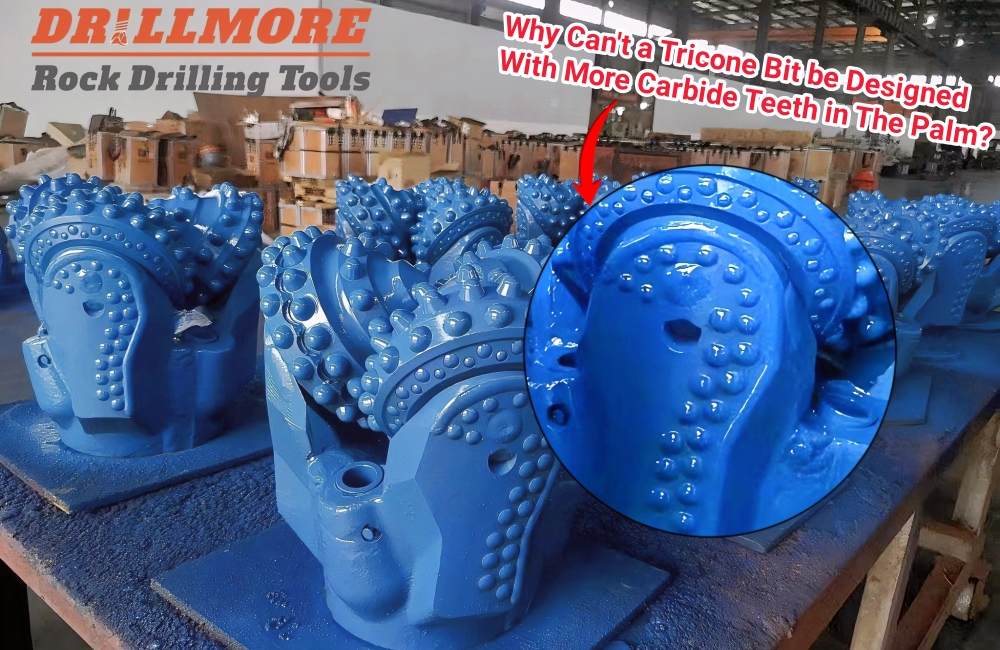Why Can't a Tricone Bit be Designed With More Carbide Teeth in The Palm?

Have you ever wondered the same thing?
Why can't a tricone bit be designed with more carbide teethin the palm section as a way to increase its durability?
What seems like a simple adjustment involves complex engineering principles and a variety of factors in practical applications. This article will provide you with a detailed answer to this question, in-depth discussion of the design mystery of the tricone bit.
First, Structural strength and stress distribution
The palm part is the key part of the tricone drill bit, which is subjected to huge drilling stress. Too many carbide teeth will lead to stress concentration and increase the risk of fracture. The increase of carbide teeth will change the geometry of the palms, weakening their overall strength and causing the bit to be more vulnerable to damage under high-pressure environments. Therefore, it is especially important to reasonably distribute the carbide teeth in the palms.
Second, heat dissipation problem
During the drilling process, the tooth wheel and carbide teeth will generate a lot of heat. Too many carbide teeth will lead to the heat is difficult to effectively disseminate, resulting in material overheating. Heat accumulation not only accelerates the wear of carbide teeth and roller cones, but also reduces the overall performance of the drill bit. The problem of heat dissipation is especially obvious in high-intensity drilling, so it is important to balance the number of carbide teeth and heat dissipation capacity in the design.
Third, material cost and manufacturing difficulty
carbide teeth are usually made of high-strength materials and cost more. Inlaying too many carbide teeth can significantly increase manufacturing costs and complicate the production process, affecting the economy and productivity. The manufacturing process requires precise control of the position and angle of each carbide tooth, which is a great challenge for the design of a large number of inlaid carbide teeth.
Fourth, balance of performance
Drill design requires finding the optimum balance between drilling speed, durability and economy. Although the addition of carbide teeth can improve durability, it can also reduce drilling speed and efficiency, affecting overall performance. Different geological conditions have different requirements for drill bits, and overemphasizing durability may lead to a decline in other performance. Therefore, the design needs to consider various factors to achieve the best performance balance.
Fifth, optimization of existing design
After years of DrillMore production practice and optimization, the existing design of the rock tricone bit has achieved the best balance in the distribution and number of carbide teeth. The current design is able to provide efficient drilling performance under various geological conditions, ensuring long service life and efficient drilling speed. The designers have taken into account a variety of factors during the design process to ensure optimum performance of the tri-cone bit.
Conclusion
Although adding more carbide teeth to the palm section may seem to improve the durability of the tricone drill bit, it is not the best option when considering factors such as structural strength, heat dissipation issues, material cost, manufacturing difficulty and performance balance. Existing tri-cone bit designs have proven their effectiveness in a variety of geologic conditions, providing reliable performance and efficient drilling results. Therefore, it is important to keep the design balanced and optimized to achieve the best drilling results.
If you have any questions or suggestions about tricone bits, feel free to contact us.
Email: mailto:info@drill-more.com
Your email address will not be published. Required fields are marked with *
















